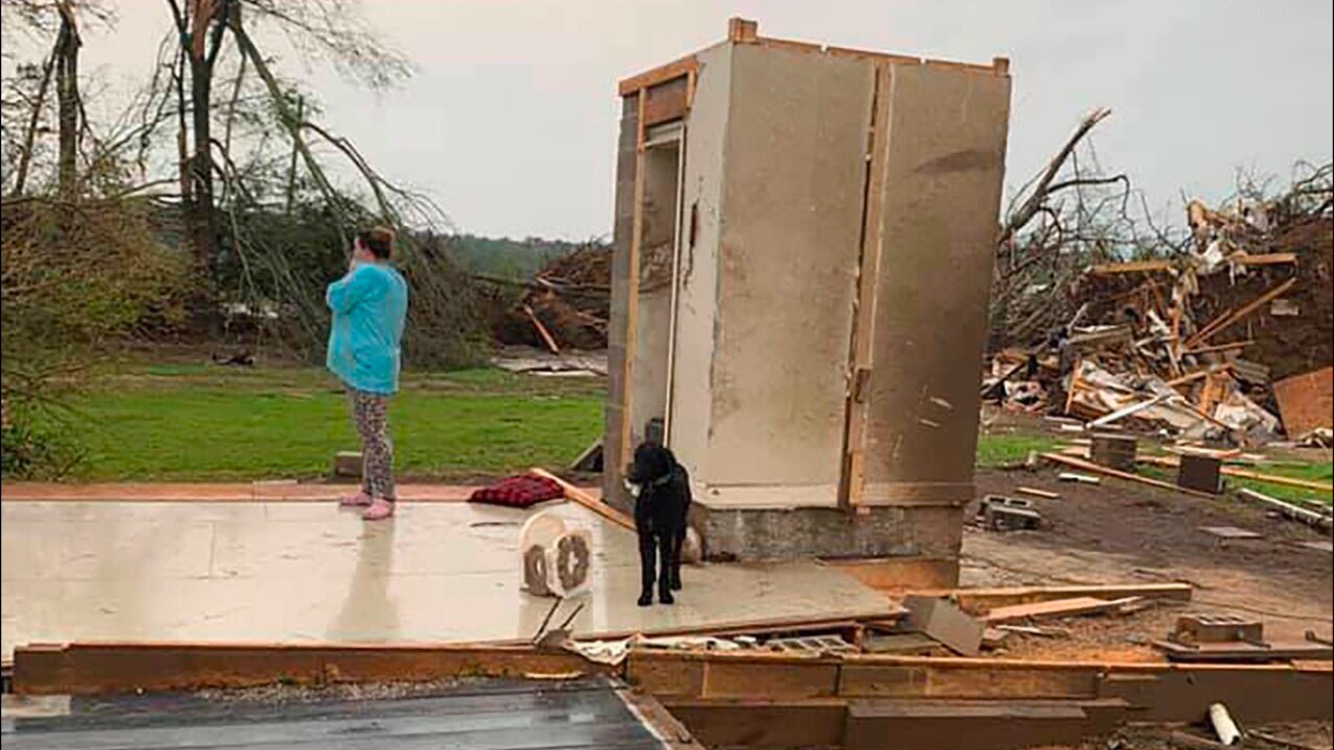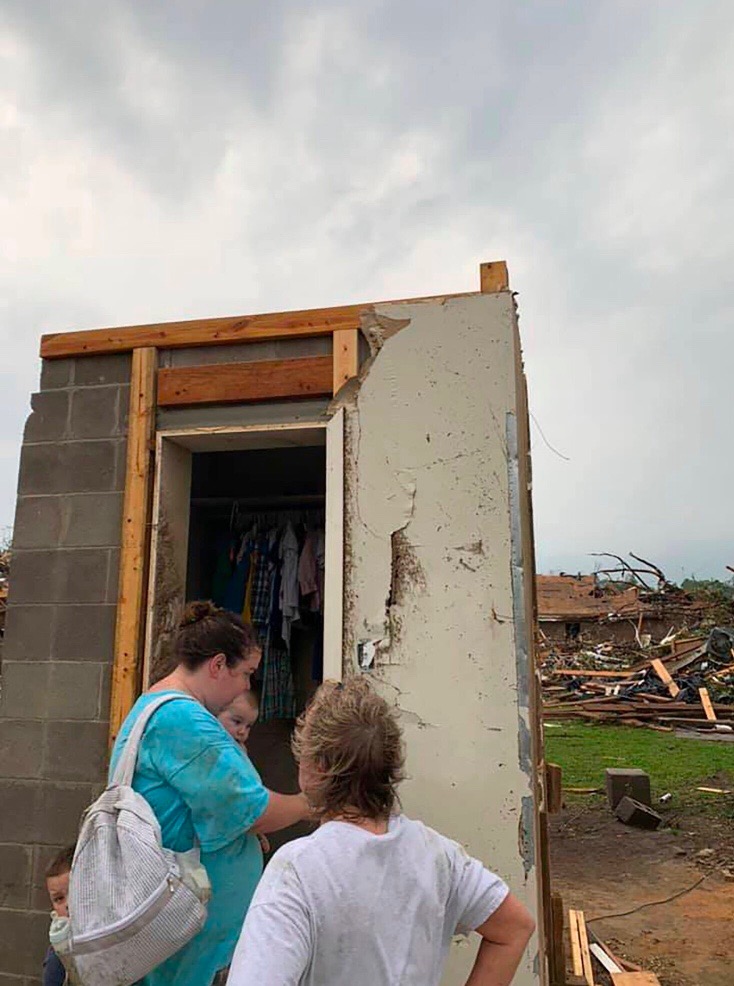
The weekend proved not only to be one of the toughest days in the fight against the coronavirus, but it also had a record number of tornadoes spanning from Texas to the Carolinas. It brought 80 different tornadoes over two days, one even traveling as far as 100 miles. In total, as many as 30 people lost their lives.
One family in Missippi family found out first hand that concrete masonry Saves lives! While everything they owned was destroyed, there was one item remaining on their property after a tornado hit, and that item saved their lives. A concrete masonry tornado shelter was built into the design of the recently purchased home of Andrew Philips, his wife Amber, and their 2-year old and 6-month old children.
The family had only been living in their new home for a few weeks. Andrew told the Associated Press that the room was doubling as a closet and was one of the reasons he bought the home. They were lucky they had it. “I was in there about 20 seconds when it hit,” said Andrew. “The house is gone, everything but the safe room.”
Why Tornado Shelters are Integral in the Southeast

For residents in the Southeast like the Phillips family, tornado and hurricane shelters have become the first line of defense for homes and businesses. These specially-designed storm shelters and safe houses are entire buildings or parts of buildings designed to provide highly protected spaces where occupants can seek refuge whenever severe weather strikes. They have a specialized concrete structure that fits FEMA criteria for life-saving protection in severe winds. And here in the Southeast, we have our fair share of it. We are in one of the highest risk areas in the country.
If You Plan to Build Your Own Shelter, FEMA Can Help
If you are looking to add a concrete masonry safe room or storm shelter to your home or business, the first step toward financial assistance is to reference the funding programs in place with FEMA. Currently, it runs three programs for hazard mitigation. For more information on each of these programs, visit https://www.fema.gov/hazard-mitigation-assistance.
Keep in mind adding a concrete masonry safe room when a home is first built is relatively easy and cheap, while adding one to an existing building is often more difficult. An 8-foot square safe room, which would comfortably hold six people, costs around $8,000 in new construction. FEMA estimates the cost to be 20% higher in existing structures.
The Southeast Concrete Masonry Association is Here to Help
Here are several references the SCMA recommends for building a concrete masonry safe room:
- FEMA P-320 – Taking Shelter From the Storm: Building a Safe Room For Your Home or Small Business.
- Helps property and business owner decide how best to provide near-absolute protection for themselves, their family, or their employees and answers many questions concerning safe rooms.
- Provides safe room designs that will show property owners and their builder/contractor how to construct a safe room for their home or small business. Design options include safe rooms located in the basement, in the garage, or in an interior room of a new home or small business. These safe rooms are designed to provide near-absolute protection from the extreme winds expected during tornadoes and hurricanes and from flying debris they generate. http://www.fema.gov/saferoom-resources/fema-p-320-taking-shelter-stormbuilding-safe-room-your-home-or-small-business
- FEMA P-361 – Design and Construction Guidance for Community Safe Rooms
- Presents design, construction, and operation criteria for both residential and community safe rooms that will provide near-absolute life safety protection during tornado and hurricane events. It provides guidance for architects, engineers, building officials, local officials and emergency managers and prospective safe room owners and operators about the design, construction, and operation of community safe rooms in extreme-wind events. http://www.fema.gov/saferoom-resources/fema-p-361-design-and-constructionguidance-community-safe-rooms
- The ICC-500 Standard on the Design and Construction of Storm Shelter, provides design and construction requirements for hurricane and tornado shelters. The standard covers structural design requirements for these shelters, as well as requirements for ventilation, lighting, sanitation, egress, and fire safety. The ICC-500 covers both hurricane and tornado shelters and includes requirements for both Community Shelters and Residential Shelters.
- NCMA TEK Notes 05-14 Concrete Masonry Hurricane and Tornado Shelters
- NCMA TEK Notes 05-11 Residential Details for High Wind Areas
Building a safe room with concrete masonry saves lives! The SCMA and its members are committed to providing resources that help saves lives in the southeast. We understand that people need resources so they can make the right building decisions for their local communities. If we can help provide additional resources or answer any questions feel free to contact us.
